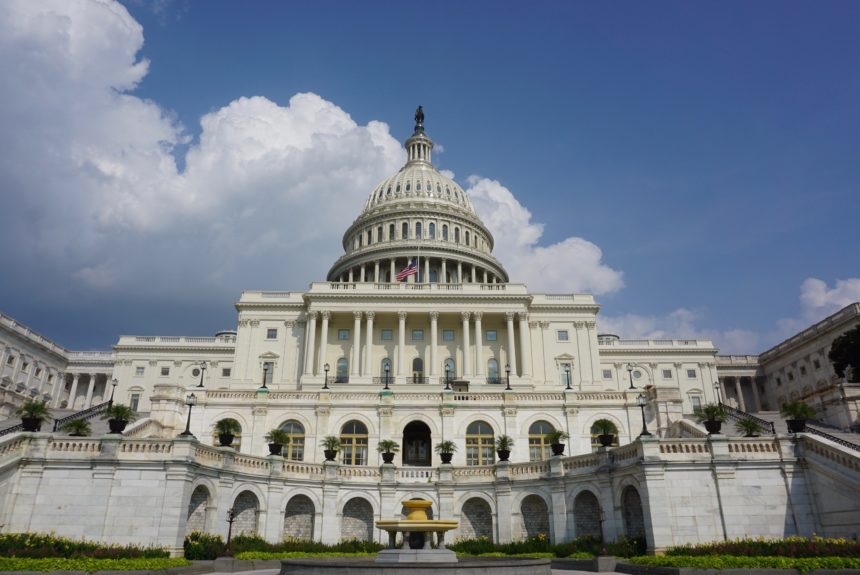Economics can be a dismal science because it often deals with the science of scarcity. In other words, you can’t have it all (nobody can) because nothing would be left for me if you did. So, economics explains that there are always trade-offs in everything.
But don’t tell that to many of our political leaders. With all the pointing fingers about climate denial, and that the government must step in and save us from climate catastrophe, how about we talk about trade-off denial?
For example, just as President Biden announced the “focus on building back better in a way that will create millions of good-paying, union jobs, ensure economic competitiveness, advance environmental justice, and improve the health and security of communities across America,” he canceled the Keystone XL Pipeline.
>>> How Conservatives Can Drive America’s Clean Energy Future
The project would have delivered 830,000 barrels per day of Canadian oil to American refineries and created jobs in the U.S and north of the border. Then Biden opposed the export of American LNG, a plentiful low-emission source of energy that would boost our allies in Europe and create American jobs. That’s trade-off denial.
Both of Biden’s actions aimed at “combating climate change,” supposedly reducing fossil fuel use. Both backfired, of course. Trade-off denial.
As a result, the U.S. had to import oil from somewhere other than our northern neighbor, Canada, making fuel more expensive for most drivers. Europeans turned to burning coal or wood to supply energy when they didn’t have enough LNG. So, the planet as a whole ended up with more CO2, the U.S. ended up with fewer jobs, and people ended up with higher prices. Lose-lose-lose. Trade-off denial.
>>> The Path Forward for ESG Is Protecting Investor Freedom
The federal government will not boost energy supplies or clean up the environment. In fact, the more government control ts over an economy and the means of production can often result in higher levels of pollution.
“During 70 years of communist rule, the former Soviet Union inflicted wide-spread environmental damage throughout Russia and the Soviet Republics,” the RAND Corporation writes. After they became independent, its former republics were “forced to deal with this legacy of destruction in an effort to rebuild their economies.” They are still dealing with it today in Chernobyl.
There is also the trade-off of the costs of keeping planetary warming at 1.5 degrees Celsius above pre-industrial levels. Roughly 80 percent of the world relies on fossil fuels, and another 685 million people do not have access to electricity. Rapidly phasing out fossil fuels would result in unimaginable economic consequences and adverse effects on humanity’s well-being. Climate policy should not make people worse off, yet many climate policies would impose high costs on families and businesses with little climate benefit to show for it.
Instead of pretending there are no trade-offs and that the government has all the answers, let’s embrace the trade-offs and allow markets to deliver the power we need while also delivering solutions that can reduce CO2.
One potential answer is upgrading our dams with newer technology. “Hydropower generation (262 terawatt-hours) represented 6.2% of total U.S. electricity generation and 28.7% of electricity from renewables in 2022,” the Department of Energy reported. That is zero-emission electricity. But instead of building more dams, environmentalists want us to remove them. Let’s upgrade dams and increase capacity instead of working to destroy them.
Another technology that is ready to deliver is nuclear, especially in the form of small modular reactors. “Amazon Web Services is investing more than $500 million in nuclear power” by building SMRs to power its data centers. That is the sort of private investment we need to encourage.
We also need to upgrade our existing transmission capacity. Wind turbines are great, but the wind tends to blow in rural areas without many people. Think upstate New York or western Texas. We need to be able to get that electricity into the grid for others to use. As entrepreneur Michael Skelly found out, that isn’t easy. We must keep regulators out of the way and allow these entrepreneurs to build transmission capacity.
In fact, we may not even need to string more wires. Companies like Tim Heidel’s VEIR are creating a “new generation of superconducting electric transmission lines.” These can handle higher currents with less power lost along the way. “VEIR reduces the space needed to transmit power, maximizes the transfer capabilities in existing corridors, and reduces requirements for new corridors.”
The country will need much more electricity in the years ahead. Everyone from Bill Gates to Charles Koch-funded companies agrees on that. Free markets can deliver that power through an all-of-the-above approach, while government policies will always be several steps behind. That’s the economically smart path forward. There is no denying that.
The views and opinions expressed are those of the author’s and do not necessarily reflect the official policy or position of C3.
